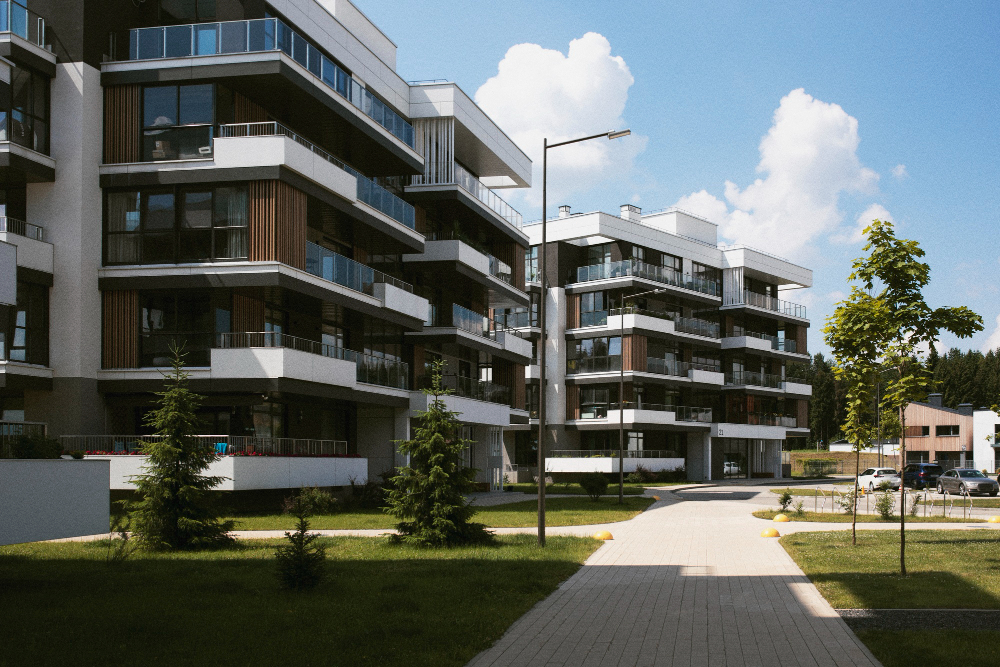Real Estate Investment

6 mins
Real Estate Market Cycles: Strategic Investment Across Four Phases

The cyclical nature of real estate markets creates both challenges and opportunities for investors. Understanding where we are in the cycle—and what likely comes next—can significantly impact investment decisions and portfolio performance. By recognising patterns across market phases, investors can align strategies with economic conditions to optimise returns throughout the entire cycle.
How Blockchain is Reshaping the Market
The Four Phases of Real Estate Cycles
Real estate markets typically progress through four distinct phases that form a continuous wave pattern:
1. Recovery
This phase emerges at the bottom of the trough when excess construction stops and the market begins stabilising. Characterised by lower occupancies, minimal leasing activity, and limited new construction, recovery can sometimes be challenging to identify in its early stages. Rents may be flat or declining, often below inflation rates.
During this phase, investors target distressed assets at discounted prices, focusing on properties that can benefit from repositioning or capital improvements that will increase appeal as the economy strengthens. This is an excellent time to find bargain opportunities, particularly for properties that can be transformed with strategic value-add campaigns to capitalise on improving market conditions.
2. Expansion
The Expansion phase favours development and value-add strategies as strong absorption supports rapid repositioning and lease-up. This is prime time for development as current demand helps properties stabilise quickly upon delivery at rates that may set new market highs. Prop.com’s value-add strategies can also be effective as investors acquire properties with current deficiencies at discounts, improve them, and capitalise on strong absorption to achieve full stabilised value.
During expansion, market fundamentals strengthen considerably. Demand increases, vacancy rates drop, and rental rates rise. Construction activity resumes as rent levels justify new development. From a macroeconomic perspective, GDP growth returns to healthy levels, job creation accelerates, and supply and demand reach equilibrium.
3. Hypersupply
The equilibrium of expansion eventually tips toward excess as overbuilding occurs or economic shifts reduce demand. Vacancies begin rising, and while rent growth may remain positive, it declines from previous peaks.
During this phase, investors consider defensive strategies that prioritise long-term leases with credit tenants or opportunistically pursue assets from owners seeking liquidity ahead of expected market declines.
Some investors may decide to sell assets in anticipation of declining property values and challenging leasing conditions. Others may seek shelter in core properties with high occupancy rates and credit tenants on long-term leases that will perform well through the coming downturn.
4. Recession
The Recession phase presents unique opportunities for opportunistic investors with patient capital. This phase allows well-capitalised investors to purchase properties on an absolute basis with patient business plans, positioning them for substantial returns when repositioning begins during the recovery phase.
In the final phase,
supply significantly outweighs demand. Vacancy rates climb, and rent growth turns negative or falls below inflation. Property managers frequently offer concessions to attract and retain tenants.
Important Variables Affecting Cycle Dynamics
Several factors influence how these cycles unfold:
Cycle Duration: Phases rarely progress at equal intervals. Recovery may be brief or extended for years, while expansion timelines vary based on underlying economic conditions and policy responses.
Geographic Variation: Different markets progress through cycles at different rates. Gateway cities often lead recovery, with secondary and tertiary markets following. Within the same metro area, urban and suburban submarkets may experience different cycle timing.
Asset Class Differences: Property types respond differently to economic conditions. Multifamily housing tends to be more resilient throughout cycles due to consistent demand, while retail, office, and industrial sectors show varying sensitivities to economic shifts.
Macroeconomic Influences: Demographic trends, interest rate environments, government policies, and consumer confidence significantly impact cycle progression and intensity.
Achieving Consistent Returns Throughout Market Cycles
At
Prop.com, we've built our investment platform specifically to navigate these market cycles with precision and resilience. Our institutional-grade approach integrates advanced analytics, blockchain transparency, and seasoned market expertise to identify opportunities across all cycle phases. By strategically diversifying across geographies and asset classes, we position our investors to achieve an unlevered 5-12% yield, regardless of broader market conditions.
Partner with Prop.com to transform real estate market cycles from periods of uncertainty into premium opportunities for lasting wealth creation.
Book a consultation now.
